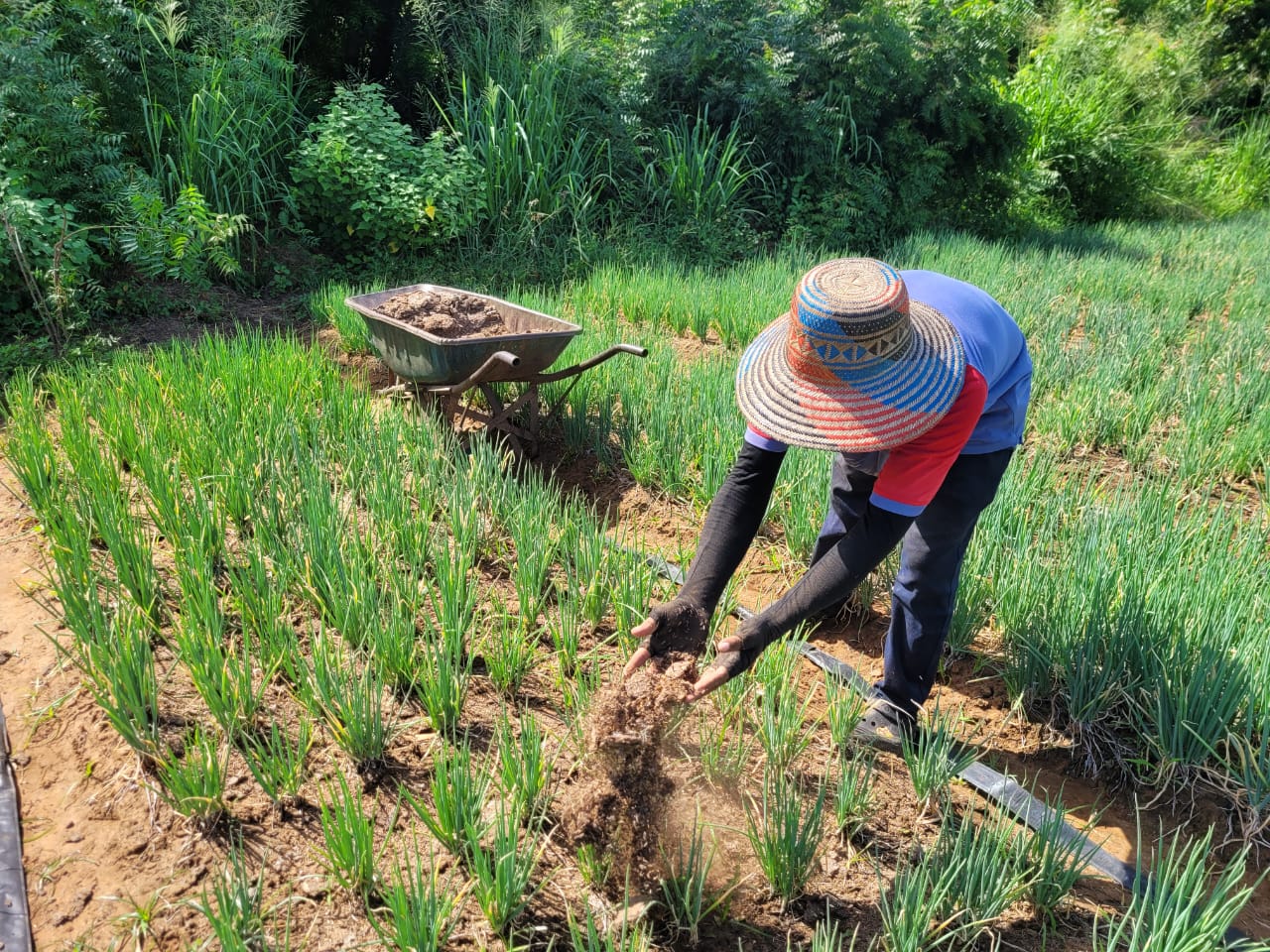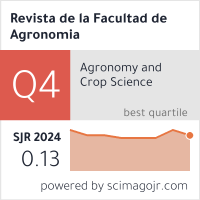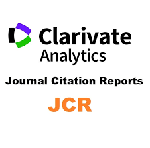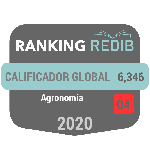Spring onion (Allium fistulosum L.) farmer’s system typologies of Maracaibo municipality, Zulia State, Venezuela
Abstract
In Venezuela, spring onions are the most widely consumed edible leafy vegetable. Their production is concentrated in small settlements where the interaction of farmers with social, technical, economic, environmental, and territorial factors gives rise to a different types of production systems. The study aimed to typify the spring onion production systems in the municipality of Maracaibo, Zulia state, Venezuela. A sample of 53 farmers was considered, to whom was applied a structured questionnaire with sociodemographic, labor, technology, territory, natural environment, and socioeconomic enviroment information. The groups were formed using multivariate techniques (Principal Components and K-Means Clustering) and were compared using Chi-square. The four groups were: 1. Mixed Family Production Systems (MFS = 36 % of the sample), centered on family labor, that combined agricultural crops with small-scale animal husbandry and the use of organic fertilizer. 2. Intensive technology systems (ITS = 23 %), where chemical fertilizers (nitrogen and phosphorus) were used intensively. 3. Family polyculture systems (SPF = 28 %) cultivated spring onion and other crops (cilantro, cassava, and plantain) for commercial sales. 4. Technified polyculture systems (SPT = 13 %), which were labor-intensive, planted large areas of spring onions and other crops (plantain and “topocho”), performed a more efficient use of inputs, and pests control. These findings help to understand specificities of each typology, that allow personalized implementation of agricultural development strategies, addressing specific factors for each group.
Downloads
References
Albornoz, A., & Maldonado, Y. (2022). Tecnologías ancestrales para la sostenibilidad en comunidades periurbanas. Ra Ximhai, 18(6) 133-155. https://doi.org/10.35197/rx.18.06.2022.06.aa
Álvarez, S., Timler, C., Michalscheck, M., Paas, W., Descheemaeker, K., Tittonell, P., Andersson, J., & Groot, J. (2018). Capturing farm diversity with hypothesis-based typologies: An innovative methodological framework for farming system typology development. PLOS ONE, 13, e0194757. https://doi.org/10.1371/journal.pone.0194757
Aquino V, Camarena, M, Julca, A., & Jiménez, J. E. (2018). Caracterización multivariada de fincas productoras de tarwi (Lupinus mutabilis Sweet) del Valle del Mantaro, Perú. Scientia Agropecuaria, 9(2), 269-279. https://doi.org/10.17268/sci.agropecu.2018.02.12
Barnes, A., & Toma, L. (2012). A typology of dairy farmer perceptions towards climate change. Climatic Change, 112(2), 507-522. https://ideas.repec.org//a/spr/climat/v112y2012i2p507-522.html
Bidogeza, J, Berentsen, P, De Graaff, J., & Oude, A. (2009). A typology of farm households for the Umutara Province in Rwanda. Food Security, 1(3), 321-335. https://doi.org/10.1007/s12571-009-0029-8
Bouteska, A., Sharif, T., Bhuiyan, F., & Abedin, M. Z. (2024). Impacts of the changing climate on agricultural productivity and food security: Evidence from Ethiopia. Journal of Cleaner Production, 449, 141793. https://doi.org/10.1016/j.jclepro.2024.141793
Boza, S., Cortés, M., Prieto, C., & Muñoz, T. (2019). La horticultura en la zona central de chile: Caracterización y actitudes de los pequeños agricultores. Chilean journal of agricultural & animal sciences, 37(1), 57-67. https://doi.org/10.4067/S0719-38902019005000201
Goswami, R., Chatterjee, S., & Prasad, B. (2014). Farm types and their economic characterization in complex agro-ecosystems for informed extension intervention: Study from coastal West Bengal, India. Agricultural and Food Economic, 2,5. https://doi.org/10.1186/s40100-014-0005-2
Guillen, L. (2020). El factor H en el desarrollo rural sustentable. En Bustillos y Gallardo (Ed.), El camino del desarrollo rural sustentable. Experiencias, contribuciones y desafios para construir un panorama alternativo. Plaza y Valdés Editores. https://www.kyk.it/9GBpxE8
Hernández, S., Fernández, C., & Baptista, P. (1997). Metodología de la investigación. McGraw-Hill Interamericana de Mexico S.A de C.V. https://www.kyk.it/7OiDYNA
IBM. (2015). IBM SPSS Statistics (versión 23.0) [Statistic software]. Armonk, NY: IBM Corp.
Kuivanen, K. S., Alvarez, S., Michalscheck, M., Adjei-Nsiah, S., Descheemaeker, K., Mellon-Bedi, S., & Groot, J. C. J. (2016). Characterising the diversity of smallholder farming systems and their constraints and opportunities for innovation: A case study from the Northern Region, Ghana. NJAS: Wageningen Journal of Life Sciences, 78(1), 153-166. https://doi.org/10.1016/j.njas.2016.04.003
Martínez, C. (2005). Estadística y Muestreo. Serie textos universitarios: Área matemáticas (12.a ed.). ECOE EDICIONES. https://www.kyk.it/BPJwVf8
Martínez, F., Guevara, F., La O-Arias, M., Aguilar, C., Rodríguez, L., & Pinto, R. (2021). Tipificación socio-agronómica y energética de productores de maíz en la región Frailesca, Chiapas, México. Revista de la Facultad de Agronomía, Universidad del Zulia, 38(1), 176-198. https://doi.org/10.47280/RevFacAgron(LUZ).v38.n1.09
Ouédraogo, F., & Tapsoba, P. K. (2022). Diversity of market gardening farms in western Burkina Faso. Nexus between production environment, farm size, financial performance and environmental issues. Heliyon, 8(12), e12408. https://doi.org/10.1016/j.heliyon.2022.e12408
Padrón, J. (2007). Tendencias Epistemológicas de la Investigación Científica en el Siglo XXI. Cinta de Moebio, 28. https://www.moebio.uchile.cl/28/padron.html
Rocha, C., Mora, J & Romero, J. (2016). Tipología de sistemas de producción en la zona rural del municipio de Ibagué, Colombia. Agronomía Mesoamericana, 27(2), 253. https://doi.org/10.15517/am.v27i2.24360
Silva, J, Santos, J, Ribeiro, P, Canadas, M, Novais, A., Lomba, A., Magalhães, M & Moreira, F. (2020). Identifying and explaining the farming system composition of agricultural landscapes: The role of socioeconomic drivers under strong biophysical gradients. Landscape and Urban Planning, 202, 103879. https://doi.org/10.1016/j.landurbplan.2020.103879
Stringer, L. C., Fraser, E. D. G., Harris, D., Lyon, C., Pereira, L., Ward, C. F. M., & Simelton, E. (2020). Adaptation and development pathways for different types of farmers. Environmental Science & Policy, 104, 174-189. https://doi.org/10.1016/j.envsci.2019.10.007
Tirado, R., Mendoza, J., Tirado-Lara, R., & Tirado, R. (2021). Análisis multivariado para caracterizar y tipificar fincas productoras de papa (Solanum tuberosum L.) en cautiverio, Cajamarca, Perú. Tropical and Subtropical Agroecosystems, 24, #106. http://dx.doi.org/10.56369/tsaes.3744

Copyright (c) 2025 Arlenis Albornoz, Fátima Urdaneta

This work is licensed under a Creative Commons Attribution-NonCommercial-ShareAlike 4.0 International License.


















